
Constantinea simplex
Cup and Saucer Seaweed
9 May 2024
Tonquin Beach, Templar Channel, Vancouver Island, B.C., Canada
Tide: 0.2 feet at 08:29 PDT (measured at Tofino Tidal Station)
Weather: Clear, wind variable 0-5 km/hour, sea smooth, very low southwesterly swell, humidity 75%, 11 ˚C.
Moon: Waxing Crescent (3.1%, 2 days); Next Phase, First Quarter, 15 May 2024 at 4:48am pm PDT; Previous Phase, New Moon, 7 May 2024 at 8:21 pm PDT.
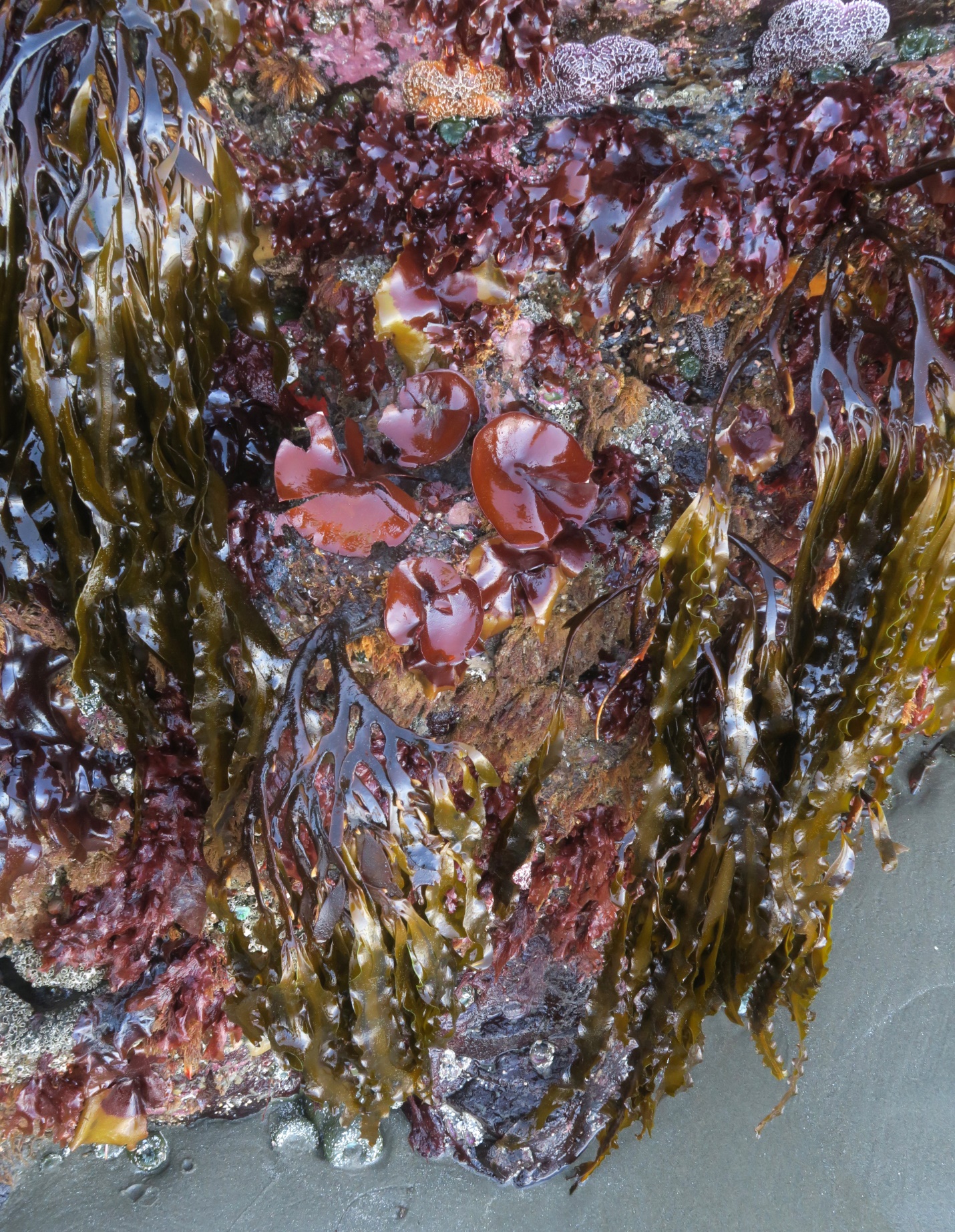
Figure 1: Six or eight Constantinea simplex ‘cups’ are seen here in their preferred habitat and also in varying states of vitality. This collection of marine life and macro algae loves the conditions of exposed, surf swept shorelines. Tonquin Beach, Templar Channel, Vancouver Island, B.C., Canada. May 9, 2024. Photo ID 27665 ©Seaweedwhisperings.com
Person 1:
I saw the shapes of Constantinea. They looked something like satellite receiver dishes. Listening but only for what they want to hear.
Self-righteous, full of itself.
In full view.
Life in the spotlight can take its toll, and so there needs to be some form of retreat.
They project the image of being tough skinned, that they can’t be broken and are impenetrable.
Many are broken; breaks are in clean lines, like fractures, like a split tree trunk defect – this is usually a slowly developing fault that culminates in a sudden final event.
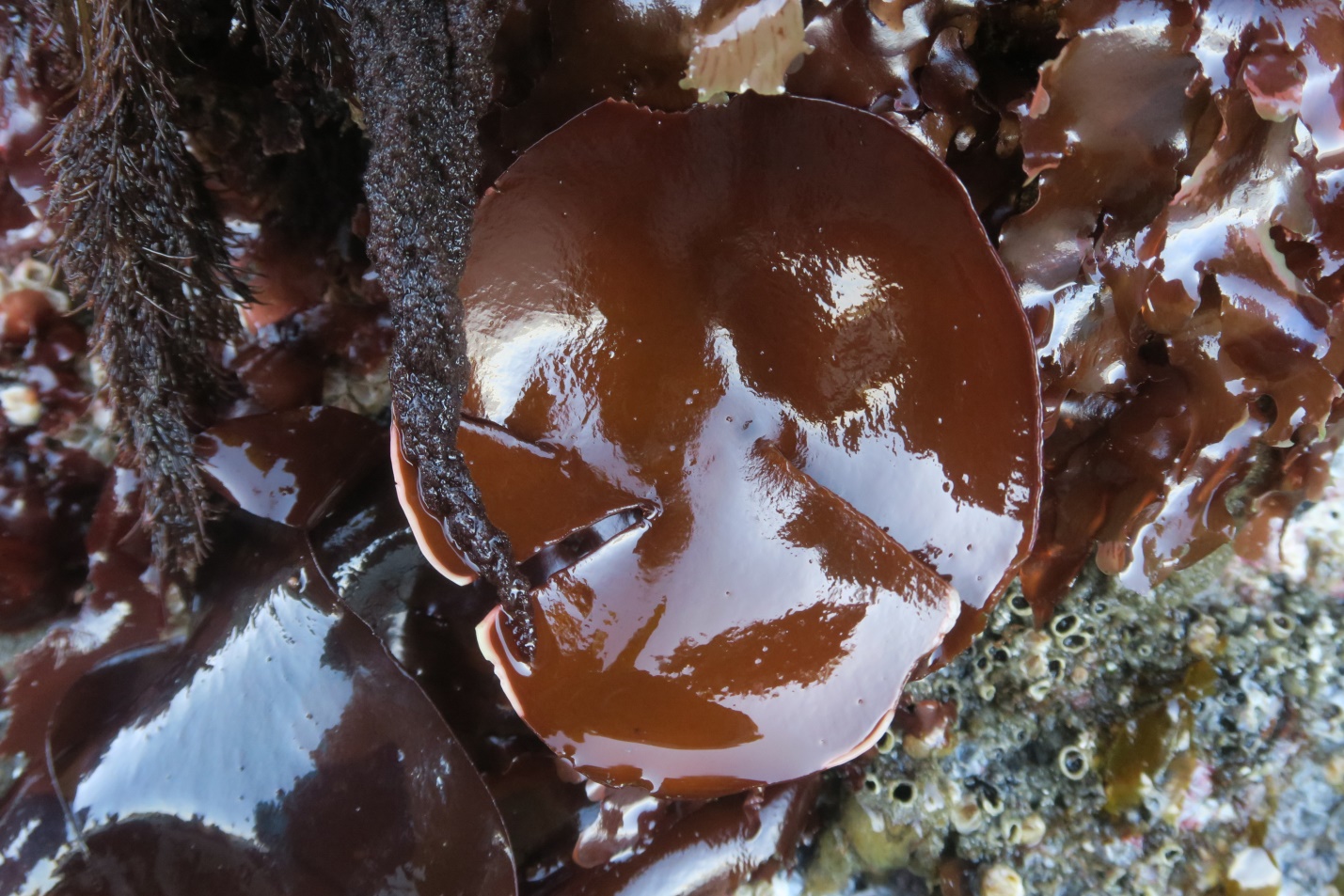
Figure 2: A lone Constantinea simplex “Cup and Saucer” seaweed is pictured here. This individual has ‘cracked, three times, and a few bites have been nibbled off the margin on the upper edge. Indeed the lower edges of the cup are bleached in a narrow white rim and this is damage from exposure at low spring tides. The overall texture and look of Constantinea remains clearly intact and identifiable, in spite of the wounds. In this location it is surrounded by other ‘red’ algae, and draping over it is one thallus of Callithamnium pikeanum; nearby is a thallus of Odonthalia floccosa. Tonquin Beach, Templar Channel, Vancouver Island, B.C., Canada. May 9, 2024. Photo ID 27666 ©Seaweedwhisperings.com
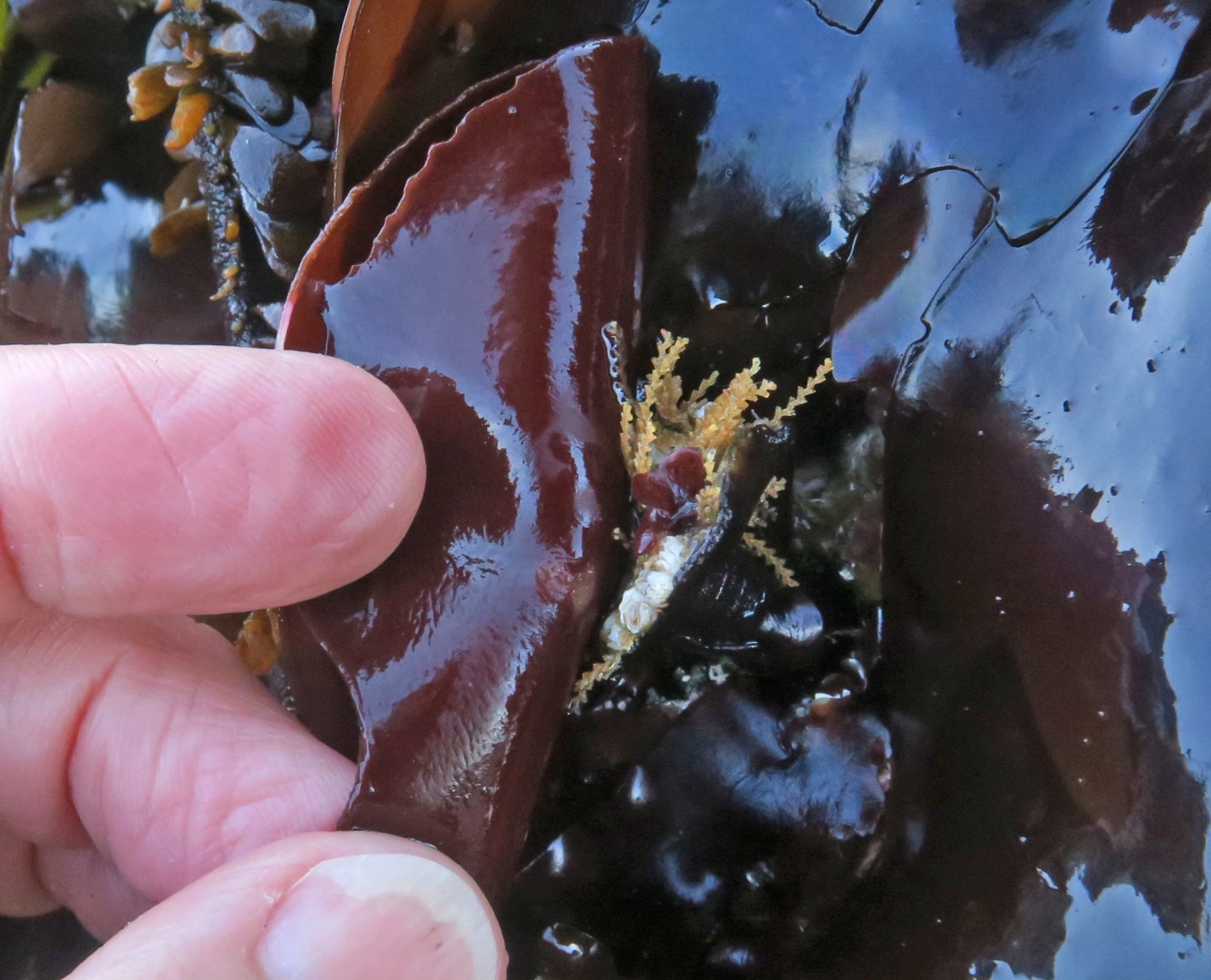
Figure 3: Lifting back this year’s cupped blade reveals the remnants of last years – which is now home for what look to be tiny barnacles, some tiny young red algae, and the bright yellow garland ‘animal’ which is a Sertularella spp. hydroid. The stipe is visible beneath this old remnant of the single blade and scars ring it – one for each year of growth of the Constantinea simplex seaweed. Tonquin Beach, Templar Channel, Vancouver Island, B.C., Canada. May 9, 2024. Photo ID 27667 ©Seaweedwhisperings.com
Person 2:
I was surprised and delighted to find you, Constantinea simplex. You are living with the strap kelp, Lessoniopsis littoralis – so it seems you also enjoy life exposed to the surf of the open coast. The rocks you grow on are also surrounded by a sandy substrate.
Your form is very pure and clean, a round disc slightly indents at the center forming a bowl or cup. This cup grows from a very short stalk. The stalk or stipe is at the center of the backside of the cup and it is really not a ‘visible’ part of this seaweed. The remains of last year’s discs linger on some individuals, tucked just underneath the new growth; on others I can count the years of previous growth by small marks or scars encircling the stipe, like growth rings on a cut tree stump. One individual I counted had at least seven rings on a stem that was only about 1.5 cm tall so this is its eighth year of life here on the rocks delimiting Tonquin Beach.
Red is a royal, rich, uniform, deep color at prime. This color can be impacted though, by exposure, turning the rims white, or also a chartreuse that also fades to a tan brown.
Blade is uniformly thick and holds its shape; I wouldn’t describe it as cartilaginous but it is not flimsy either. There are no veins visible and no ridges of any type; there isn’t any “mid-rib” structure that gives strength as is common to some more ‘leafy’ seaweed species.
In some, the perfect circle form of the blade has been ‘broken’; in fact this seems to have happened to most of the ones I see at this location today. The ‘breaks’ mainly seem to be in clean lines that extend from the rim downwards towards the center where the stipe joins beneath. I wonder what it is about your cell structure that causes such a clean fissure.
And the breaks do not heal or mend – that is plainly clear. They are permanent markers of past injuries and offences.
You don’t like these breaks, Constantinea, as they mar your symmetry. The integrity of your shape is lost and you are transformed into a segmented thing with either parts of you overlapping other parts to form a tighter “cracked cup” or with your segments splayed open as they are bent somewhat back upon themselves; this latter view makes it look somewhat like simple rotate flower shape (wedges joined to form a wheel). Either way, this really does ‘ruin’ your previous perfection.
I wondered just what is it that ‘breaks’ you? Is it wave action? That doesn’t seem to fit with the locations you obviously prefer to inhabit – why pick exposed coastlines if you are susceptible to wave damage? That just isn’t biologically reasonable or sustainable.
Or is it that you get too big “for your own britches” and you are then vulnerable to even a type of self-harm or to damage from impacts? It could be that the elastic strength of your cup shape and the thickness of your blade both only permit a certain size and no more. There may be an ideal size that creates the perfect tension between the span and rim of the cup. If this is exceeded, you break.
Or possibly, if your growth originates from your center (near the stipe) in some conditions maybe the outside rim doesn’t quite keep up, and when balanced growth rate is lost, you break.
Possibly in extreme wave and weather conditions the blades of the nearby strap kelp whip onto your open face and this breaks you?
Floating marine debris could certainly harm you, but this beach is remarkable free from any of that.
I think I’ll simply have to conclude that I really do not know what breaks you, Constantinea simplex.
As a perfect circular cup, you look somewhat like a satellite dish, and it makes me wonder what ‘waves’ you take in, collect and interpret, Constantinea. It is interesting that I sense really only one direction to this – that you “take in” really rather quite a lot..., but you don’t “send out” much at all. Am I missing your outgoing signal?
A bit later I thought, perhaps Constantinea does “send out”, transmit and emit, too, of course it does, but it feels like that is carefully controlled. They send out only when their signal / message has been fully defined and also determined to be properly calibrated and perfected. There’s no careless chatter coming from Constantinea. It was interesting to experience this “delay”, because at first “listen” it really feels like nothing will be forthcoming from Constantinea, and then later, and without any fanfare at all, you realize that you’ve received exactly the signal that Constantinea sees fit to transmit for the particular occasion / receiver / circumstance at hand.
When your form is entire, Constantinea, you hold water, and at this beach small collections of sand, just like a shallow cup or bowl. When you are entire you also reflect light quite well, almost like a mirror, and so in this way you can yet again seem somewhat inscrutable. Is there something you would have others see about themselves first, Constantinea? Something that needs to be in place before you will want or permit them to “see” you?
I found some of you that had been damaged – by exposure to light or wind or both, I’m not sure which. But whatever it was, it caused you to discolor at your rims from your deep red to vivid chartreuse green. This really creates a total marring of your perfection, so much so that you could be overlooked completely, as if you chose a camouflage coloration. But you don’t have a camouflage character; instead you proudly stand out, really rather prominently. However, perhaps if damaged and not in full health, you do want to not draw attention, you fade into the background and keep the wounded aspect of you out of view.
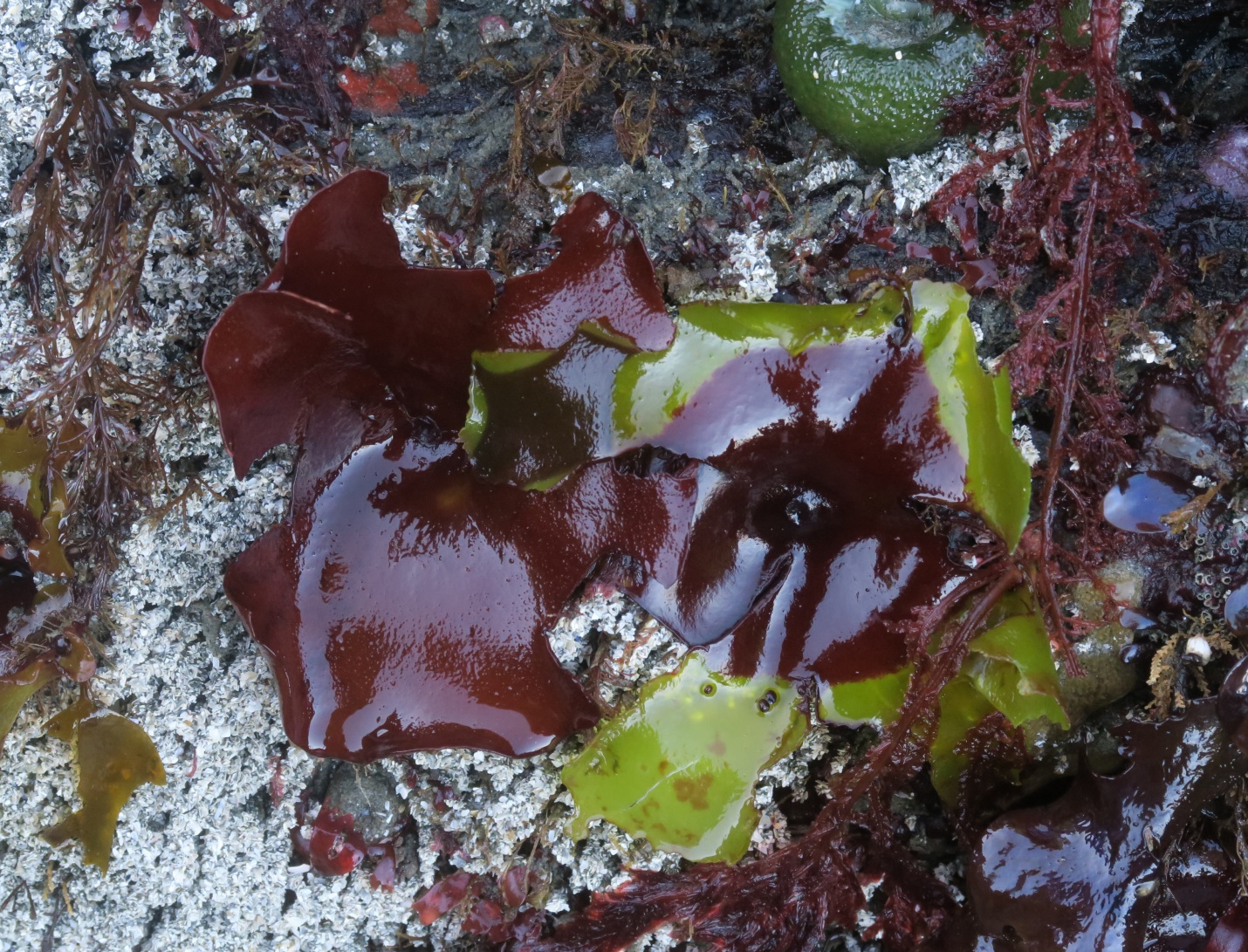
Figure 4: With the color chartreuse added at the margins and the cup fractured into a wheel of centrally connected wedges, you might overlook these Constantinea simplex individuals – they look dramatically different from their prime, pure, circular and cupped deep red form. Tonquin Beach, Templar Channel, Vancouver Island, B.C., Canada. May 9, 2024. Photo ID 27668 ©Seaweedwhisperings.com
Discussion:
Breaks to the ‘cup’ of Cup and Saucer seaweed mar integrity of the shape and possibly inhibit receiving capacity; input is then perhaps not so rich or full or clear.
The outgoing signal can easily be missed if you are not open to it; the obvious and simple good looks may distract some from experiencing the simple wisdom on offer from Constantinea. Almost as if the good looks disguise the inner “wisdom” if consideration of Constantinea is too quick or superficial.
Person one found this seaweed to be “full of itself” and person two found it possibly could grow to become “too big for its britches”. This suggests that others may sometimes be looking at Constantinea with some degree of envy or certainly a comparative measure of their successes. One might think of the word “arrogant” as fitting for such a subject of envy, but there really is a pure, clear, sureness to Constantinea’s energy that is not really pushed upon others – no, not at all. Instead others need to almost approach and request and “tune in” and then wait..., and then whatever Constantinea has to share will be revealed. There is no show-off nature to this whatsoever. It is not advertised or boasted about. However when others come upon Constantinea they do “stand up and take note” – something is available here, they understand, if only they can tune in and listen.
On the early morning of our on-site interaction with Constantinea simplex, Person 1 developed a strong lower gastro intestinal discomfort that he described as feeling blocked, stopped up or constipated. This is an uncommon, even rare, issue for him. He did not want to leave the beach due to this malady, but it was impactful enough that he took time at several intervals to sit on boulders and to connect and ground. He did this a few times, and when he got to where Constantinea simplex was growing on the low intertidal rocks, he sat once again to rest. As soon as he welcomed in and connected with the energy of this seaweed, he immediately felt better – in his lower abdomen and in his whole being.
Later, when entering these field notes, we chose to look at this event with the fullness of our experience. We felt this easing of the strong physical discomfort was one example of a more general theme for C. simplex and that is: certain others can benefit by close association with Constantinea as a quiet and beneficial energy gently radiates from them.
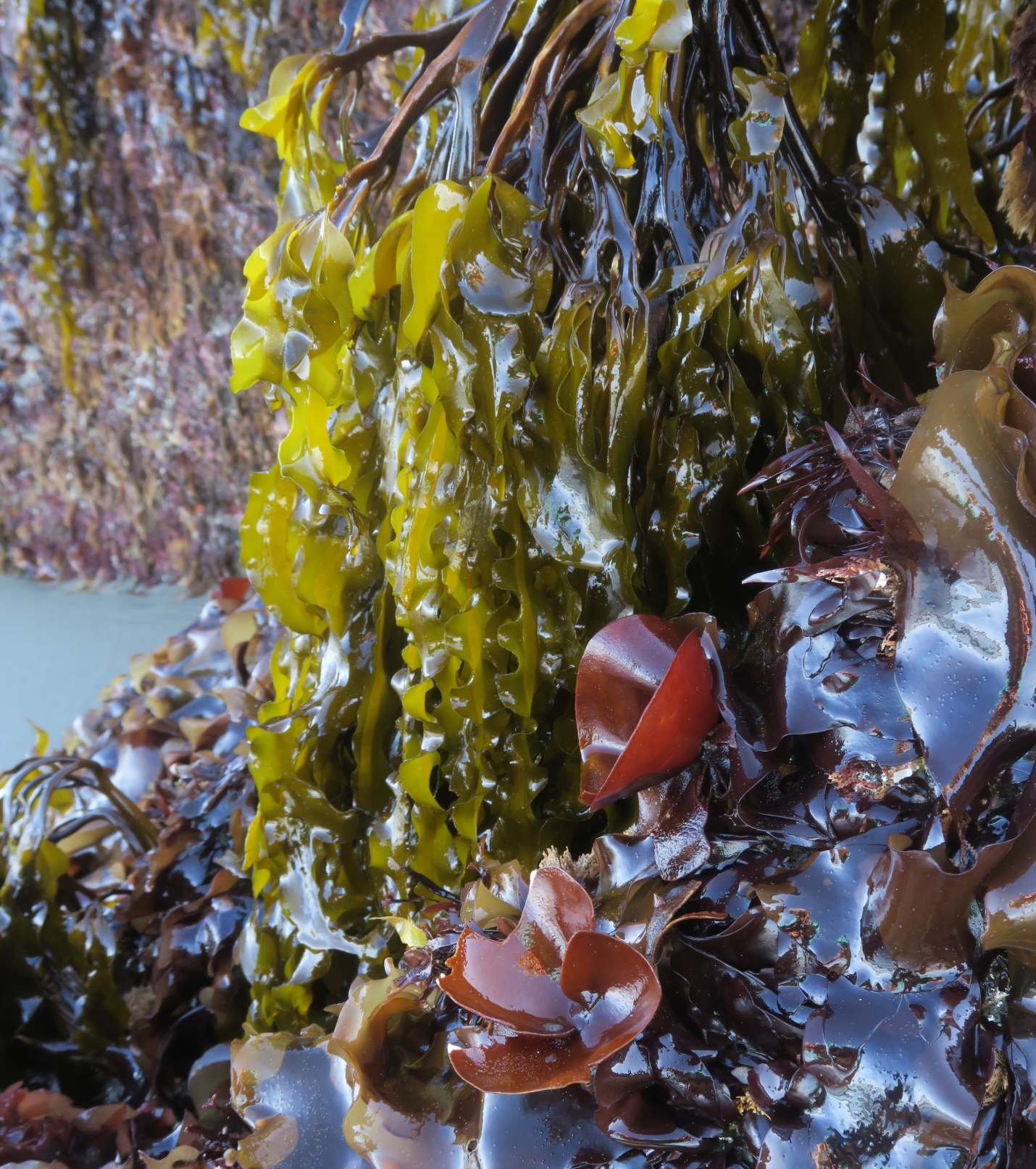
Figure 5: At this season most of the cups of Constantinea simplex are cracked and otherwise past their prime – a perfect cup shape. Somehow, they still manage to be open and receiving..., taking in much as they can as they persist longer into the spring. Tonquin Beach, Templar Channel, Vancouver Island, B.C., Canada. May 9, 2024. Photo ID 27669 ©Seaweedwhisperings.com
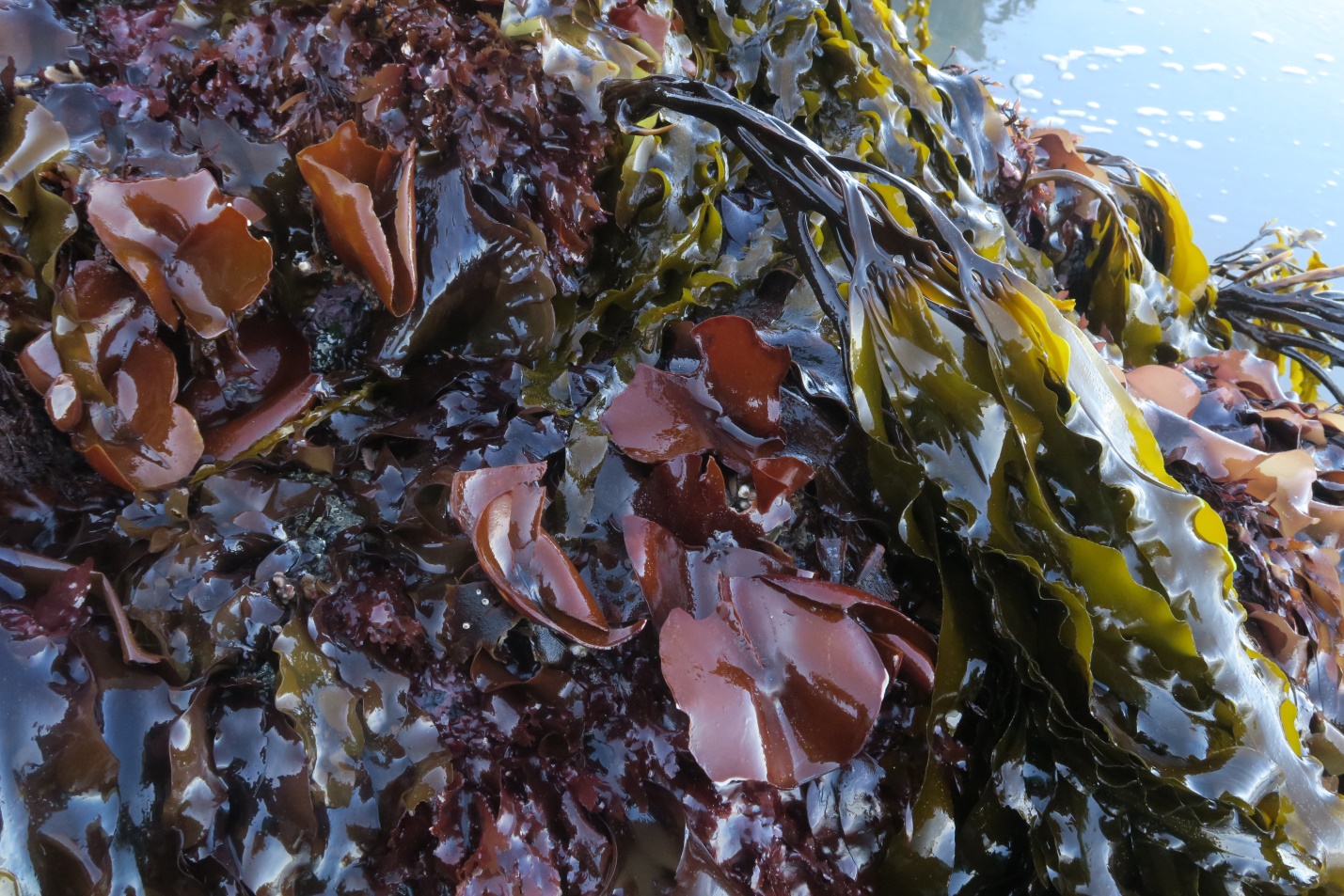
Figure 6: Quite a number of Cup and Saucer seaweeds are growing here, mixed in with many other vigorous and robust macro algae species. Tonquin Beach, Templar Channel, Vancouver Island, B.C., Canada. May 9, 2024. Photo ID 27670 ©Seaweedwhisperings.com
Days later, another immersion:
Pops up like a mushroom; the cup shape symmetry resembles some types of mushrooms. Like mushrooms, this seaweed has its stipe in the center and underside of the main circular mass of it. The blade stands out perpendicular to its stipe. This is an unusual form for seaweeds.
The breaking is a sudden demise. They’re doing well, and then it’s over instantly, never to recover their former perfection. Once split and broken their character changes irrevocably.
A lot of seaweeds tend to gradually tatter or it takes lots of force over time to destroy them. With Constantinea, it seems like all it takes is a single, direct blow, and it’s over. Probably those harmful blows also need to occur when C. simplex is weakened, by age or other circumstances.
However, it’s only ‘over’ for this year. The same stipe will produce a new perfect blade again next season. Constantinea persists in this way. It has the ability to regroup, concentrate its life energy at its core and then, when circumstances are favorable, express its vitality anew.
We found the analogy of a winning sports team that loses the championship but the next year they regroup and shine again.
There is the feeling that this energy is at home with being at the top, and if they lose that place, they will steadily regroup and return to their prime.
When you are at the top, there can be a lot of pressure to “take you out”. So, to remain at the top requires resilience to adversity. If you can’t stand some blows you can’t reach the top, let alone stay at the top.
The fact that they appear to “take in” more than they “give out” may help to keep them at their best. It is how they keep abreast with current happenings and they then take the time to evaluate this input carefully and to use it well for whatever serves them. They also have the ability to filter out the trash, and they don’t give back out any trash. And will state that most others who experience their energy would agree – Constantinea, if it gives you anything, gives out a concentrated and simple perfected wisdom.
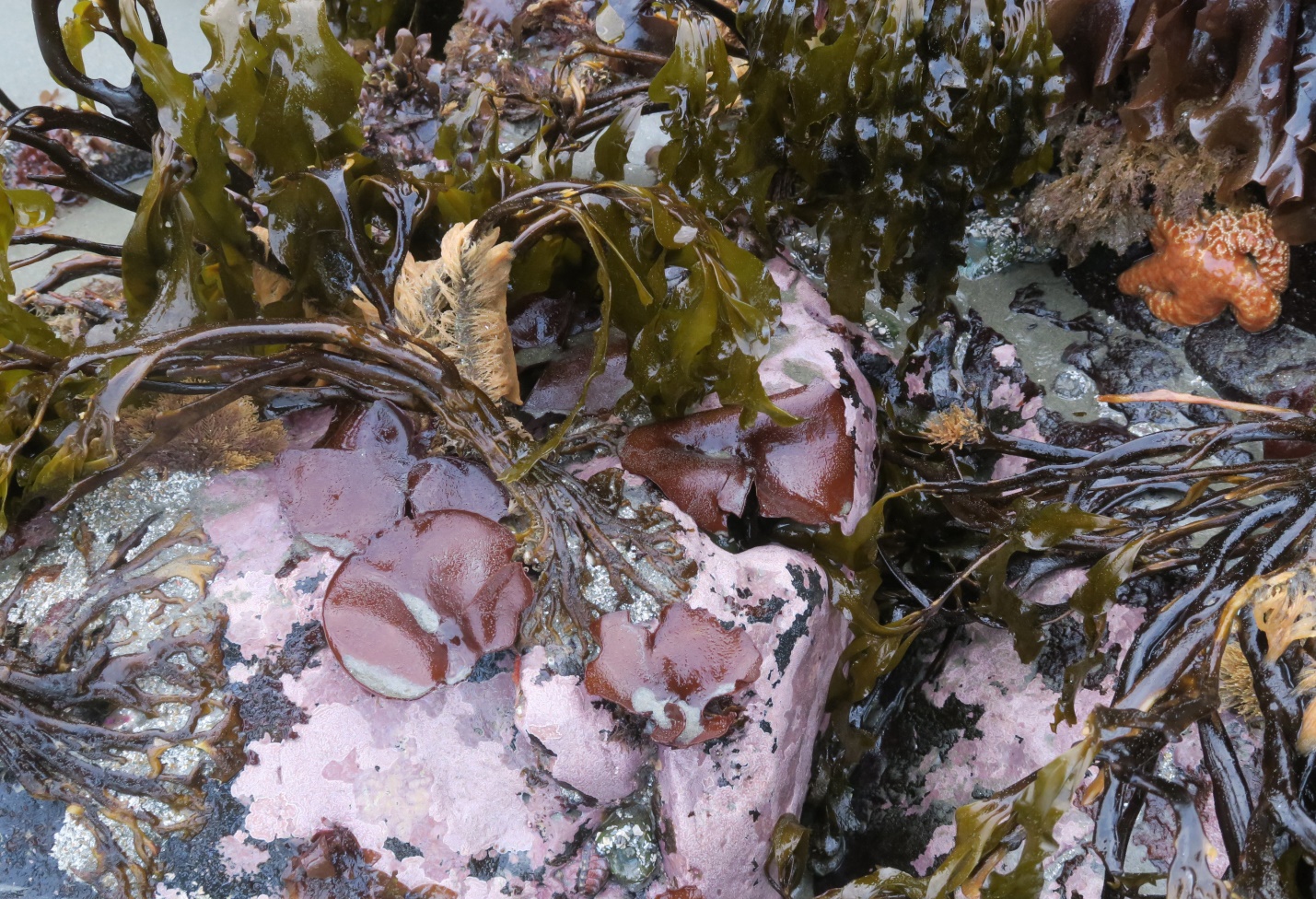
Figure 7: On this low rock outcrop there is a strong coating of coralline pink algae, and also several branched finger-like holdfasts of Strap Kelp, Lessoniopsis littoralis. Also at home here are four or five Constantinea simplex individuals. The Cup and Saucers are a bit “worn” and cracked, but they choose this wave swept environment alongside the much larger kelp species, sea stars, hydroids and other marine life. Tonquin Beach, Templar Channel, Vancouver Island, B.C., Canada. May 8, 2024. Photo ID 27671 ©Seaweedwhisperings.com
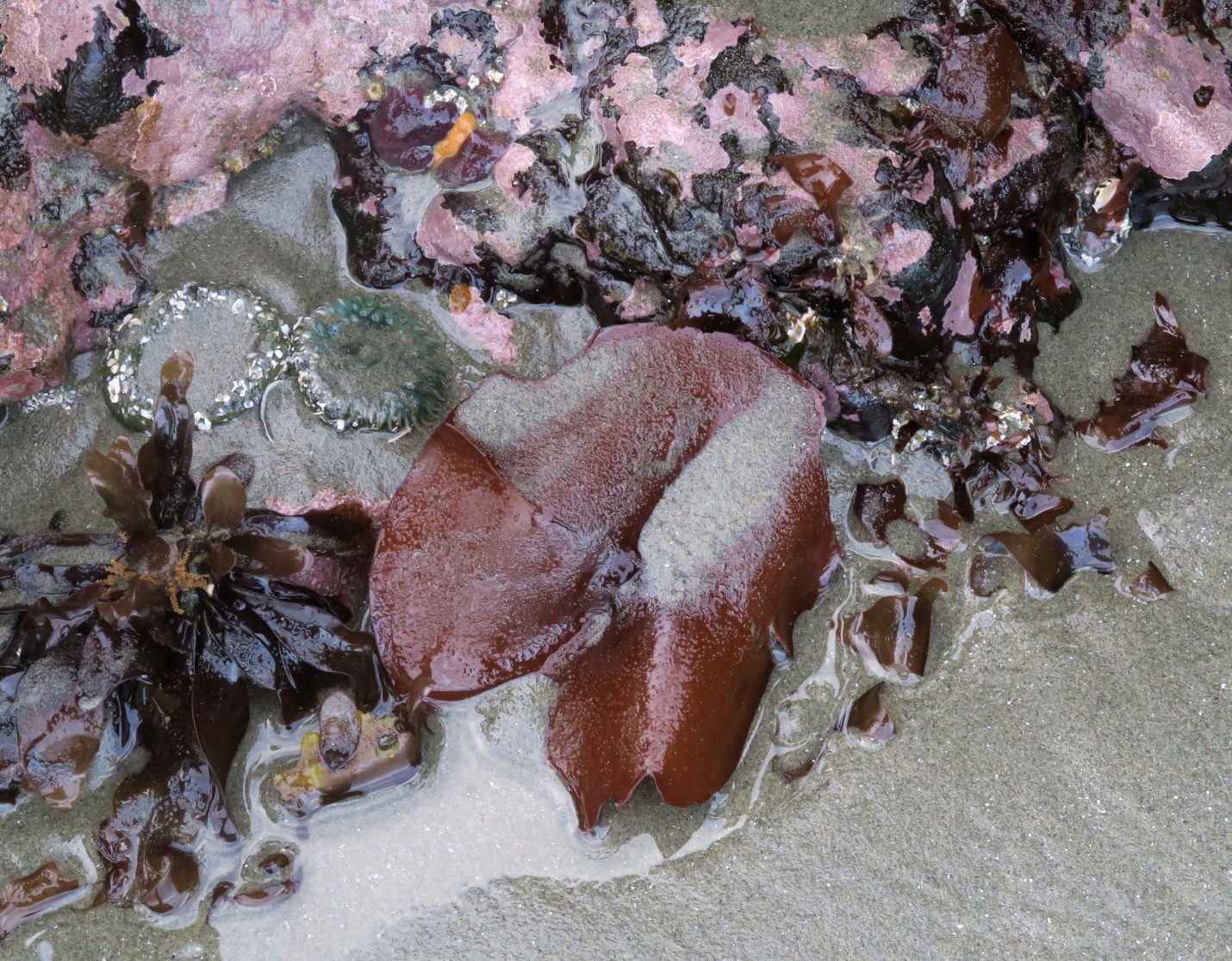
Figure 8: It seems that Constantinea simplex likes not only exposed coastlines but also beaches with excellent rock footings that are surrounded by sand. This individual is partially buried with sand as are other nearby algae and anemones. Tonquin Beach, Templar Channel, Vancouver Island, B.C., Canada. May 8, 2024. Photo ID 27672 ©Seaweedwhisperings.com
Biology & Natural History Information:
Description:
This red alga is easily recognized as a cup-shaped blade that is supported by a short, unbranched, cylindrical stipe which attaches in the center of the cup. A perennial species, each year a small nubbin in the center of the blade develops into a new blade directly above the old one. These new small “cups” centered in last year’s “saucer” can be observed in early March in northern California. The new blade expands and completely replaces the previous years, and eventually the old one underneath wears away and leaves a scar. The single thick blade can grow up to 10 or 15 cm in diameter, is dark red or reddish-brown in color and has a stiff or leathery texture.
Habitat:
On rocks, often associated with sand, low intertidal and shallow subtidal of exposed open-coast shorelines.
Distribution:
The range of this species extends from the northern Pacific Commander Islands of Kamchatka, and the Alaskan Aleutian Islands, eastwards to northern Alaska and then southward down the coast to Point Conception, California.
Remarks:
By counting the annual blade scars on the stipe of Constantinea simplex you can calculate the age of the individual thallus. Constantinea simplex differs from its more northerly relative, Constantinea rosa-marina, in that it does not have a branching stipe and does not undergo stipe elongation. C. simplex also seems to prefer more open-coast and exposed shorelines.
The genus, Constantinea, is named for a phycologist named Constance; the species name, simplex, meaning simple, is a reference to the seaweed’s unbranched, undivided and simple structure.
Classification:
Phylum: Rhodophyta
Class: Florideophyceae
Order: Gigartinales
Family: Dumontiaceae
Genus: Constnantinea
Species: Constantinea simplex Setchell 1901
Other name(s) & synonyms:
Notable for this species is that there are no synonyms or previous names; the ‘simple’ structure is one that was clearly identifiable and has not been confused with similar species since its original scientific description by Setchell in 1901.
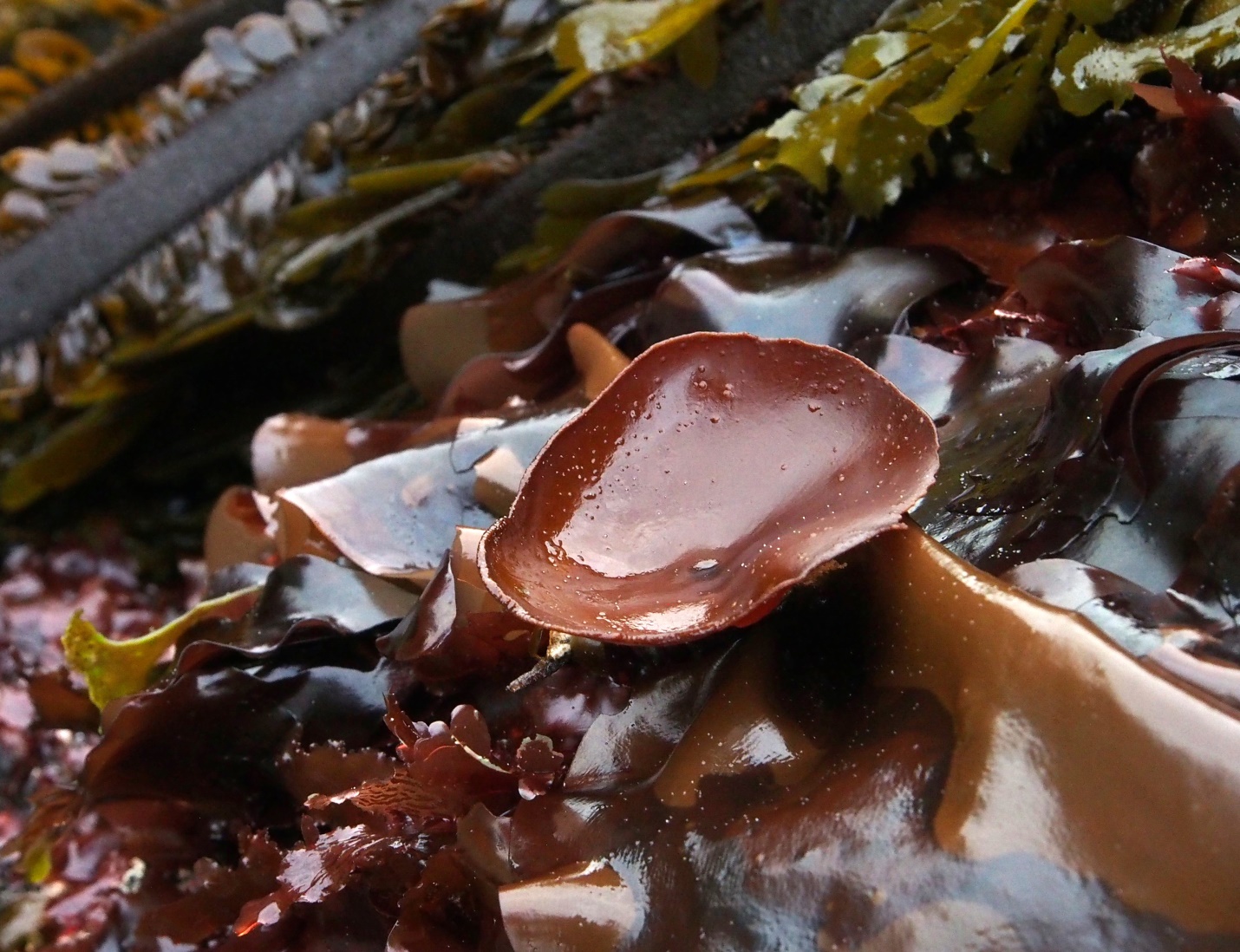
Figure 9: A Constantinea simplex “satellite dish” stands just above and clear of surrounding algae, holding its cup out to take in all that it can from the sun and the sea. Tonquin Beach, Templar Channel, Vancouver Island, B.C., Canada. May 8, 2024. Photo ID 27673 ©Seaweedwhisperings.com
![]()